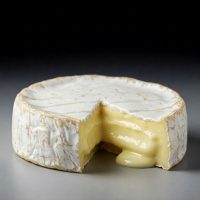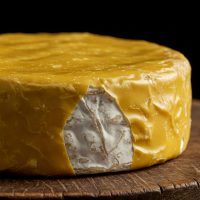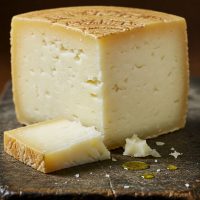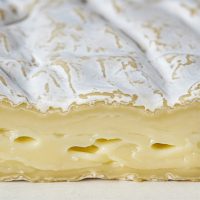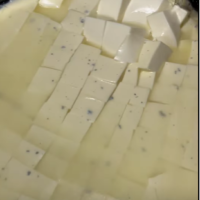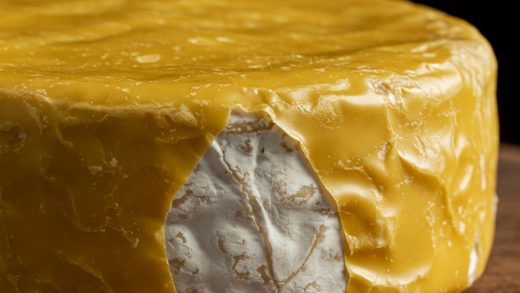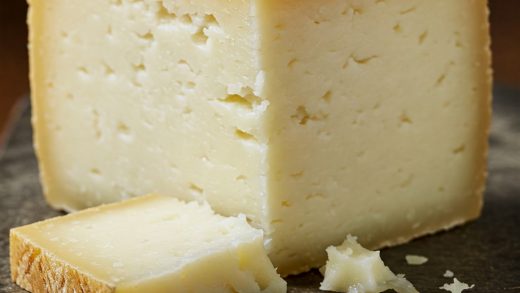Yes, you can often safely eat Parmesan cheese even if it has mold, as long as you cut away at least one inch around and below the moldy area.
So you’re staring into your fridge, ready to sprinkle some Parmesan magic on your pasta, and bam! A little fuzzy green surprise on your cheese.
Ugh. Mold. We’ve all been there. Immediately, you might worry, “Is this cheese ruined? Is it safe to eat any of it?” It’s a valid concern – nobody wants to get sick from bad food. Mold on food generally makes us think “yuck” and “danger.”
But here’s the good news about that block of Parmesan: you can probably save most of it! Hard cheeses like Parmesan, cheddar, and Gouda are actually pretty resilient when it comes to mold.
Once you’ve removed the affected area, the rest of the Parmesan should be perfectly fine to enjoy. Just remember to store your cheese properly after this, wrapped tightly, to help prevent future mold growth.
So, don’t despair over a little mold – your Parmesan (and your pasta night!) can likely still be saved!
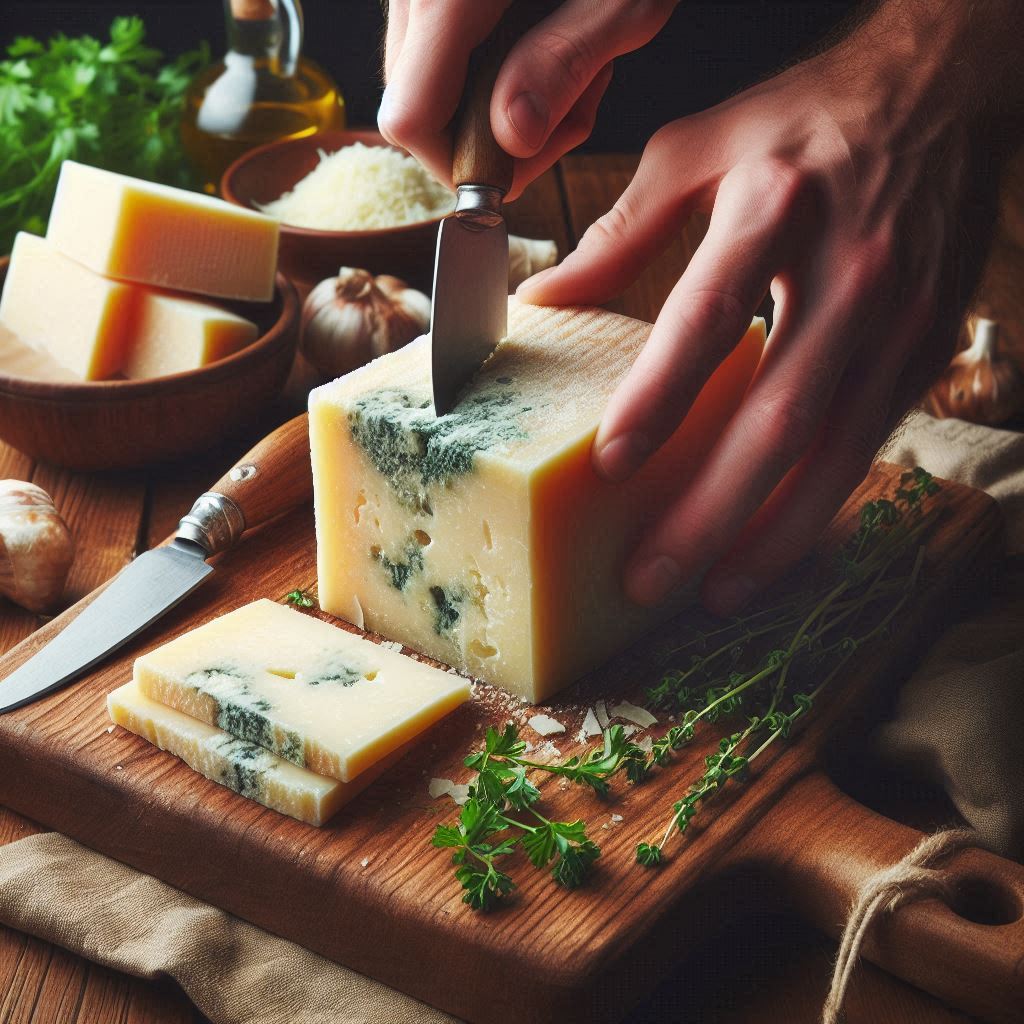
Understanding Mold on Cheese
Ever wonder why that fuzzy stuff sometimes appears on your cheese? It’s all about mold, a type of fungus that’s actually all around us – in the air, in our homes, everywhere!
Think of mold spores like tiny seeds floating around, just waiting for the right place to land and grow. Cheese, especially if it’s been exposed to air, can be a perfect landing spot. It’s got the right moisture and nutrients to help those spores sprout and become visible mold. It’s a completely natural process.
Now, here’s a cool thing: not all mold is bad! In fact, some molds are essential for making certain kinds of cheese. Think of the beautiful blue veins in Gorgonzola or the white rind on Brie.
Those are created by specific, carefully chosen molds that give the cheese its unique flavor and texture. These are the “good” molds, the ones cheesemakers intentionally use.
But the mold you find growing on your Parmesan? That’s usually not the good kind. While it’s less common on hard cheeses like Parmesan, it can still happen.
The molds that might pop up on Parmesan are often the same types you might find on other foods, like Penicillium (though not the kind that makes penicillin, that’s a special type).
These molds aren’t usually dangerous in small amounts on hard cheeses, but they definitely don’t contribute to deliciousness and are best removed. So, while mold can be a cheesemaker’s friend, it’s not always a welcome guest on your block of Parmesan.
Is It Safe to Eat Moldy Parmesan?
So, you’ve got a little mold on your Parmesan. The big question: is it still safe to eat? Good news! Hard cheeses like Parmesan, cheddar, and Gouda are generally pretty safe to eat even if they have a little mold.
Because they’re so dense and dry, mold has a hard time penetrating deeply. It mostly stays on the surface. Think of it like a tiny, unwanted guest at a party – it hasn’t really gotten into the main part of the house.
Here’s the key: you have to remove the mold and a good chunk of cheese around it. That’s because mold can sometimes produce substances called mycotoxins, which aren’t good for you.
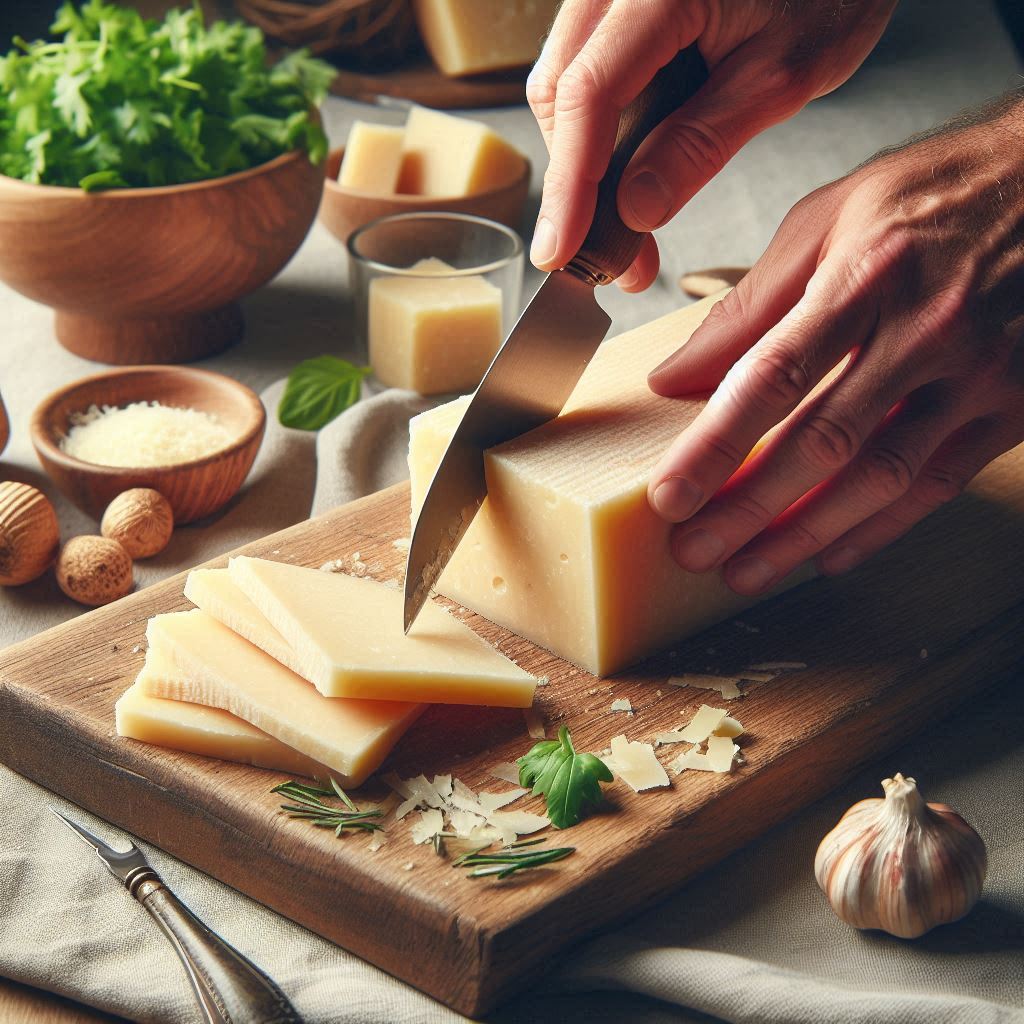
While these are less likely to be present on hard cheeses, it’s still best to be cautious. Cutting away the mold and the surrounding cheese helps make sure you’re getting rid of any potential nasties.
Now, it’s a completely different story with soft cheeses. Think of brie, ricotta, or even crumbled cheese. If you see mold on these, you should toss them.
Soft cheeses have a lot more moisture, which means mold can easily spread throughout the entire cheese, and those potentially harmful mycotoxins can be present throughout. It’s just not worth the risk.
- Hard cheeses (like Parmesan): Generally safe if you cut away the mold.
- Soft cheeses (like brie or ricotta): Toss them if you see mold!
While the risk of getting sick from mold on hard cheese is low, it’s always good to be aware. Some people are allergic to certain molds, which could cause a reaction. And in rare cases, some molds can produce toxins that could make you sick.
That’s why it’s always best to be cautious and remove the mold thoroughly. When in doubt, it’s always best to err on the side of caution.
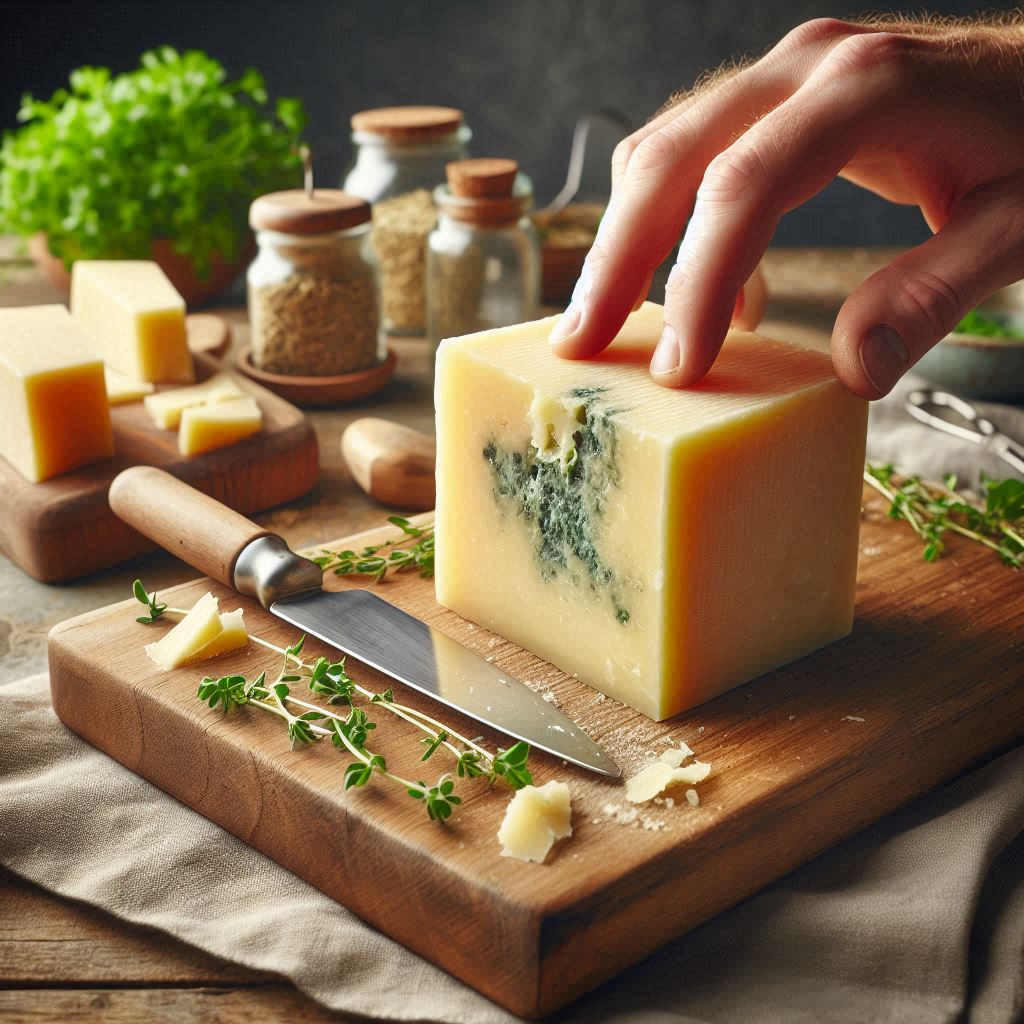
How to Safely Cut Mold Off Parmesan?
So you’re ready to tackle that moldy spot on your Parmesan. Here’s how to do it safely and effectively:
Gather your supplies
You’ll need a sharp knife (a paring knife or small chef’s knife works well), a cutting board, and maybe some paper towels. Make sure everything is clean!
Prep the cheese
Place your Parmesan on the cutting board.
Clean your knife
Before you even touch the cheese, wash your knife with soap and hot water. This is super important to avoid spreading the mold.
You can even dip the knife in a diluted bleach solution (one tablespoon of bleach per gallon of water) for a few seconds and then rinse it well if you want to be extra careful.
Cut away the mold
This is the crucial step. You need to cut away at least one inch around and below the moldy spot. Think of it like creating a little “moat” around the mold. You want to get rid of any potentially contaminated cheese.
Be careful not to cross-contaminate
As you’re cutting, try your best not to let the knife touch the mold and then the good part of the cheese. That could spread the mold. If this happens, clean the knife again before continuing.
Dispose of the moldy piece
Wrap the removed cheese in a paper towel or put it in a sealed bag and toss it in the trash. Don’t leave it lying around, as this can spread mold spores.
Clean your knife again
Yes, again! Wash and dry your knife thoroughly to make sure it’s completely clean.
Enjoy your (now mold-free) Parmesan
You can now grate or slice the remaining cheese as usual. Just remember to wrap it tightly in plastic wrap or store it in an airtight container to help prevent mold from growing back.
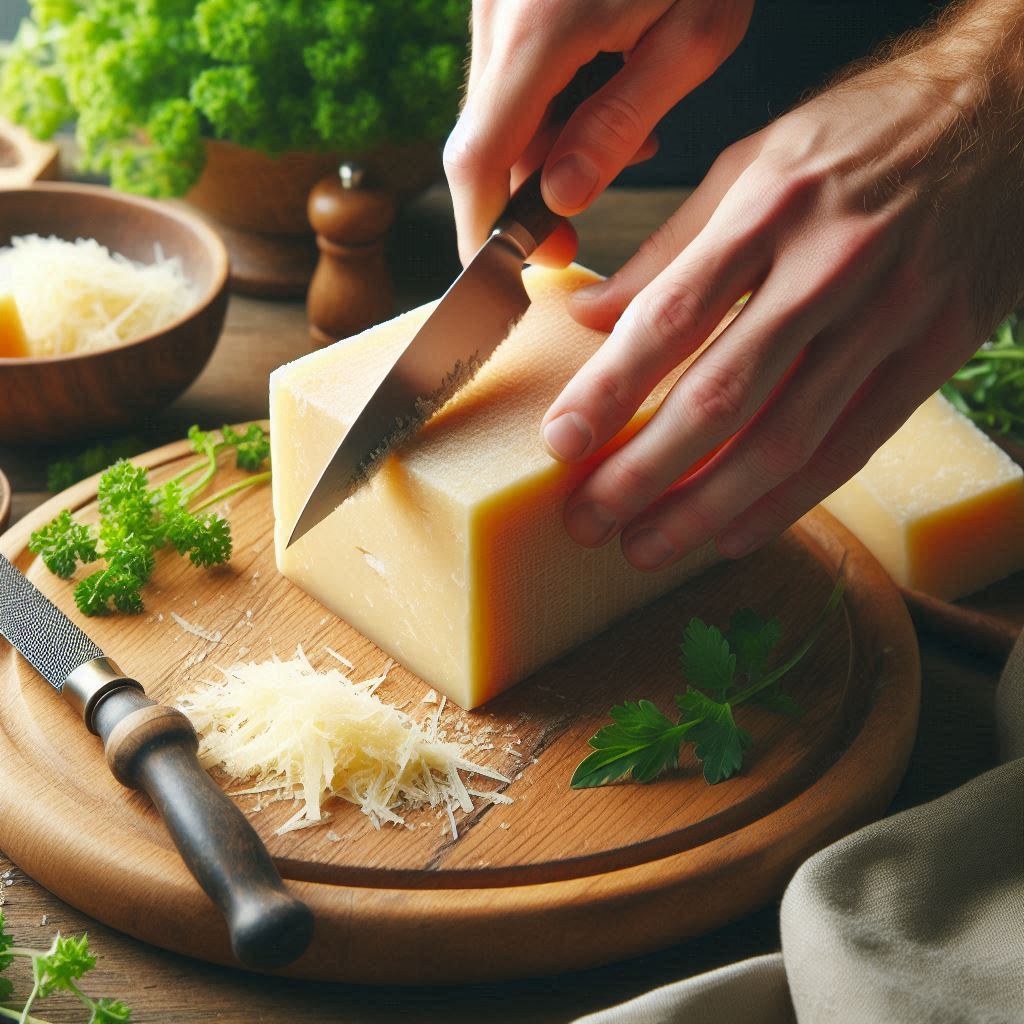
When to Discard Parmesan Cheese?
While you can often salvage Parmesan with a little trimming, there are definitely times when you should just toss it. It’s all about being safe and smart when it comes to food. So, when is moldy Parmesan a no-go?
Widespread or Deep Mold
If the mold has spread all over your Parmesan or seems to have grown deep inside, it’s best to discard the whole block.
Cutting away a small spot won’t be enough in this case, and the mold might have already penetrated further than you can see. It’s just not worth the risk.
Ammonia Smell or Unusual Texture
Sometimes, mold growth can cause changes in the cheese beyond just the visible spots. If your Parmesan has developed a strong ammonia smell, or if the texture seems really off (like slimy or mushy where it shouldn’t be), it’s a red flag.
These changes could indicate that the cheese has gone bad beyond just surface mold, and it’s best to throw it away.
Unsure About the Mold
While the mold you see on Parmesan is usually a common type, if you’re unsure about what it is, it’s better to be safe than sorry.
If the mold looks really unusual (different color, fuzzy texture, etc.) or you’re just not comfortable with it, don’t risk it. Tossing the cheese is the safest option.
Basically, if in doubt, throw it out! It’s better to waste a little cheese than risk getting sick. Your health is the most important thing.
Proper Storage to Prevent Mold
So, you’ve successfully rescued your Parmesan from a moldy situation, and now you want to keep it fresh and mold-free for as long as possible. Proper storage is key! Here’s how to give your Parmesan the best chance of staying delicious:
Wrap it Up Tight
Air is the enemy when it comes to mold growth. So, after you’ve used your Parmesan, wrap it tightly in plastic wrap. Try to squeeze out as much air as possible as you wrap it. You can also store it in an airtight container. This creates a barrier against those pesky mold spores floating around in your fridge.
Keep it Cool
The refrigerator is your Parmesan’s best friend. Cold temperatures slow down mold growth significantly. So, always store your Parmesan in the fridge, preferably in a crisper drawer or a cool part of the fridge.
Freezing for the Future
If you have a lot of Parmesan and you know you won’t use it all soon, consider freezing it. Grate the Parmesan first, then put it in a freezer bag or airtight container. Frozen Parmesan can last for several months. When you’re ready to use it, you can use it directly from the freezer; it will thaw quickly.
FAQs
How do you remove mold from Parmesan cheese?
To remove mold from Parmesan, you should cut away at least one inch around and below the moldy spot. Use a clean knife, and avoid cross-contaminating the knife or other parts of the cheese. Discard the removed portion and the knife should be cleaned again before using the remaining cheese.
Is it safe to cut mold off of Parmesan cheese?
Yes, it’s generally safe to cut mold off Parmesan cheese. Because Parmesan is a hard cheese, mold usually only grows on the surface. You should cut away at least one inch around and below the mold to ensure you’ve removed any potentially harmful substances.
How long does Parmesan last in the fridge?
Properly stored, unopened Parmesan can last 2-3 months in the refrigerator. Once opened, it’s best consumed within 2-3 weeks for optimal quality, though it may still be safe for a bit longer if stored correctly.
Conclusion
So, there you have it! While mold on cheese can be a little alarming, it’s often not a reason to panic, especially when it comes to hard cheeses like Parmesan.
By carefully cutting away the mold and a good margin of cheese around it, you can usually salvage your Parmesan and enjoy it safely.
However, it’s always important to use your best judgment. If the mold is widespread, the cheese smells off, or you’re just not comfortable with it, don’t hesitate to discard it.
Food safety is paramount, and making informed decisions is the best way to keep yourself and your family healthy.




